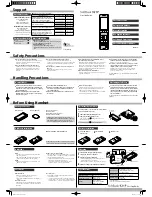
White paper
G900c
36
August 2008
Phone applications
The following call features have been included in
G900c:
• Ongoing call menu: G900c has a dynamic
ongoing call menu that changes to help the user
perform actions quickly and simply.
• Accept calls: users can specify which calls to
accept and which calls to reject.
• Rich call functionality: G900c allows SMS and
MMS messages, as well as contact cards to be
easily sent during a call.
• Call notes: G900c can launch Notes during a
call. The note is automatically named with the
other party’s number, name (if known), time of
call and date. The user can start writing in the
note immediately.
• Follow up call: G900c can automatically create
follow up call tasks. The task contains the
phone number, contact name, time of call, and
date of call.
• Speakerphone.
Call log
The Call log is where all calls – dialled calls,
answered calls and missed calls – can be seen.
Detailed information for a call can be displayed and
the user can also dial a number displayed in the
Call log.
Business telephony
Corporations have traditionally used fixed-line and
DECT phones in the office, but now there is a
strong trend towards the use of mobile phones to
access business telephony features. Of prime
importance, however, is that users can still access
the features and functionality of their corporate
communication system, no matter which phone
they are using. G900c can interact with the
following corporate systems:
• A corporate PABX (Private Automatic Branch
Exchange) switch, equipped with a mobile
extension port (like the Ericsson MD110 and
BusinessPhone).
• The mobile centrex service, if provided by the
Operator.
• A telephony server located at the Operator’s or
customer’s premises.
Feature buttons
The user activates corporate features by selecting
commands from a list, which can be dynamically
sent by the server via an IP link, or pre-configured
by the company’s IT manager, the Operator or a
service provider. Each command displays a text
description of the function.
When a command is selected, pre-configured
DTMF tones are used to communicate the desired
function to the server. The phone can even be used
to send data that the user is prompted to provide,
such as the date they will be back from a business
trip. Feature commands and text descriptions have
to be programmed using XML and then imported
into the phone.
Ongoing call features are reached from the active
call view.
















































